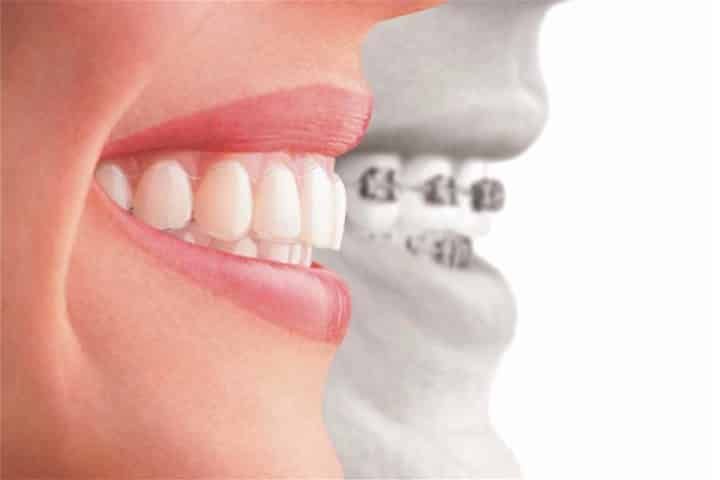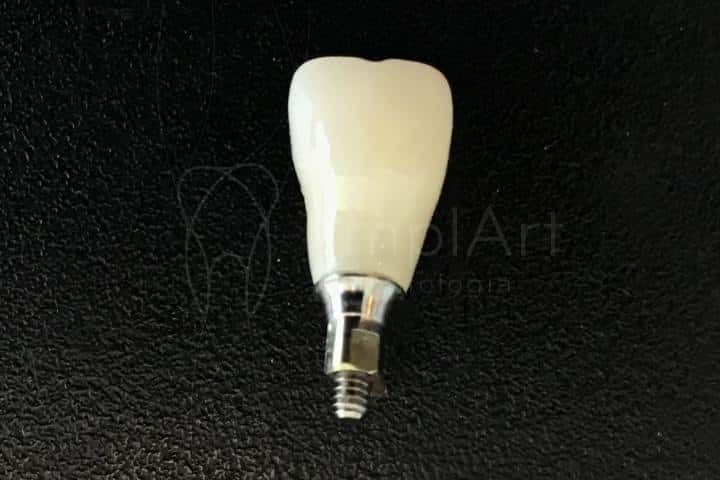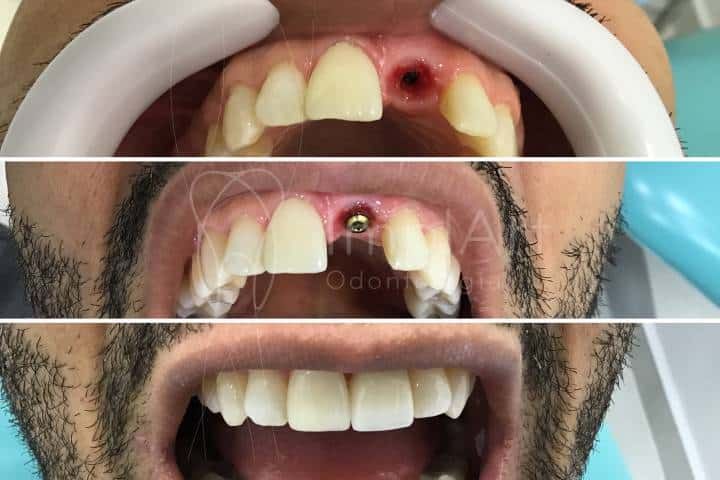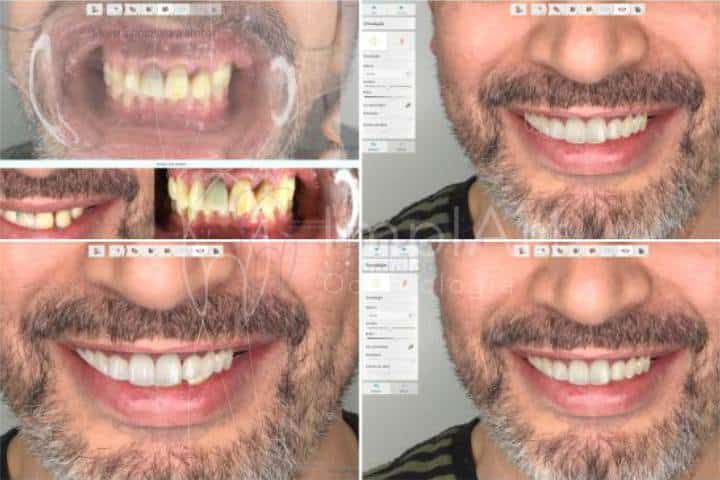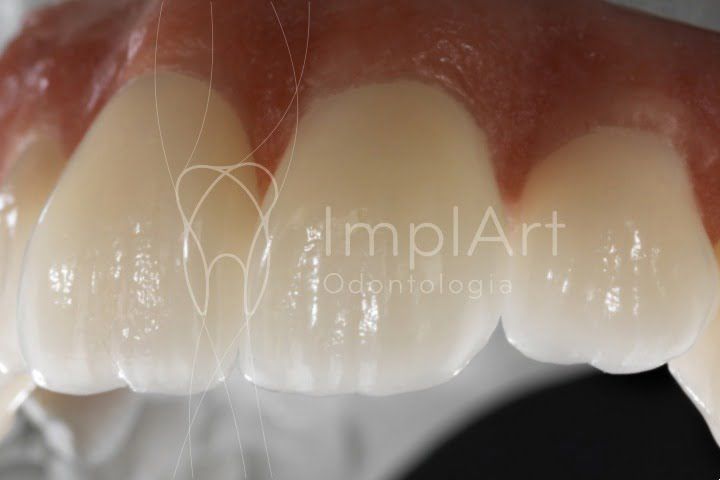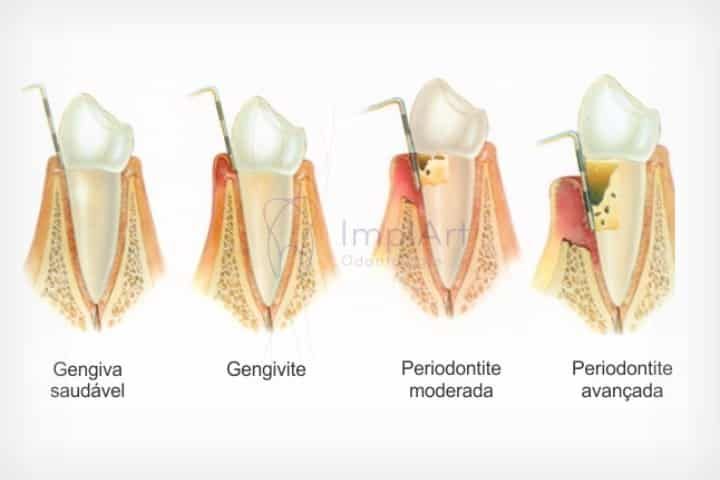Dental Implants for Dentures – Acrylic Bridge
The Branemark prosthesis is a technique developed in 1969 by the Swedish doctor Bränemark with the aim of oral rehabilitation (Dental Implants for Dentures) with dental implants for people who have lost their teeth. It is currently indicated for people who lost their teeth many years ago and therefore have little bone volume (advanced bone resorption).
In these people, mobile prostheses, dentures (normal, partial and dentures) often become loose and cause discomfort and insecurity. In this way, a fixed prosthesis on implants certainly brings much more peace of mind and comfort to the wearer. Treatment with the Bränemark protocol consists of two stages: surgery with implants and prosthetics at intervals of four to six months for the mandible and maxilla. This interval is necessary for the correct healing of the dental implants.
The material used for protocol prostheses can be resin, and its technical name is metal-plastic. In this case, the prostheses can come in two versions: Resin with national teeth or Resin with imported teeth. In this second option, we can consider teeth with more natural aspects, and more resistant to wear and acquiring stains from food. However, the most modern materials today are zirconia protocols and porcelain protocols on total implants.
Topic related to Dental Implants for Dentures in Brazil
Why should I have Dental Implants for Dentures?
The Dental Implants for Dentures is a modern option for patients who have lost all their teeth. It is anchored by screws to several implants, providing greater stability and chewing efficiency. In addition, treatment brings with it a number of benefits. Here are several of them, which you can consider if you’re thinking of having a protocol prosthesis:
- Chewing efficiency: Because it is screwed onto several implants, the Dental Implants for Dentures prosthesis offers greater stability and chewing efficiency than other solutions such as removable prostheses. The prosthesis does not fall out and can only be removed by the implant dentist in the clinic.
- Easy adaptation: The Dental Implants for Dentures prosthesis is known for its easy adaptation and general use.
- Durability: The resin acrylic prosthesis is durable and will restore your bite for several years. However, it may be necessary to replace the prosthesis in the future if the materials wear out.
- Aesthetic results: A branemark bridge prosthesis can provide a natural aesthetic result, giving patients back their self-esteem and confidence to smile.
- Freedom: Prostheses give patients more freedom and also improve their self-esteem.
- Less pain and frequent bruising of the gums: Protocol-type dentures can reduce the occurrence of frequent pain and cuts in the gums. This is because the prosthesis does not rest against the gums and is not mobile, so it does not cause sores.
- Ease of cleaning: Full arch acrylic implants are easy to clean. There are appropriate instruments for cleaning your fixed teeth. The full resin implant prosthesis has a smoother texture and accumulates less plaque than ordinary removable prostheses and dentures.
- Cost: Resin bridges usually require a lower investment than the second option, porcelain, or even zirconia. In addition, maintenance, when necessary, is not expensive.
What’s the difference with plain ceramic (metal) or zirconia metal-ceramic prostheses?
Metal-ceramic prostheses, known as porcelain, differ from metal-plastic prostheses, known as resin or acrylic prostheses, in terms of their resistance and aesthetic results. Porcelain surpasses resin because it offers long-term patient comfort, since it is much more resistant to wear and tear and remains the same over the years as the day it was installed, in terms of color and tooth shape. Translucent Zirconia, on the other hand, allows computerized methodologies to be used to plan and execute full-arch prostheses. In addition, its resistance and aesthetic results are superior to any other, making it the most modern material option available in dentistry today.
Metal-ceramic prostheses: the internal structure is made of titanium alloy while the aesthetic coating is made of dental porcelain. Despite what it may seem, these materials are very light and resistant.
Zirconia is the most modern technology for making fixed prostheses on implants. For full-arch dental implants we have Translucent Zirconia and Zirconia with porcelain applied.
Dental Implants for Dentures images – photos of real cases
See below for examples of our Branemark Acrylic Prosthesis clinical cases. We have our own in-house dental laboratory capable of carrying out the treatment more quickly, safely and with the highest quality.
At the ImplArt clinic we have already carried out thousands of treatments with full-arch dental implants. Come and see our work!





Dental Implants for Dentures prosthesis and total implant with immediate loading
Nowadays, with the advances made in dentistry, in some cases it is possible to implant in 72 hours using immediate loading. First, four, five or six implants are installed, distributed over the entire arch. They are then left to rest (heal) for four months. After this period, the acrylic prosthesis is fixed onto the implants. For this treatment with immediate loading, there is a need for clinical indication, so that the success of the treatment is not compromised.
Do Dental Implants for Dentures last forever?
The longevity of a fixed bridges for dental implant can be influenced by several factors, including the patient’s oral hygiene and the type of prosthesis used.
The implant pin/screw, which is made of titanium and acts as the root of the tooth, has the potential to last a lifetime. This is due to its ability to integrate with the jaw bone, a process known as osseointegration.
However, the dental prosthesis, which is the artificial tooth placed over the implant, may need to be replaced over time, as they wear down with use and chewing, in the same way as natural teeth. Dental prostheses are generally made of acrylic, zirconia or porcelain, and their durability can vary. For example, a resin prosthesis can last up to 10 years, while a porcelain or zirconia fixed prosthesis (all on 4) can last up to 20 years.
It is important to note that the longevity of the dental implant can also be affected by the patient’s general oral health. Good oral hygiene and regular visits to the dentist for check-ups and maintenance are essential to maintain the health of the implant and prosthesis.
Conclusion
The Dental Implants for Dentures is made from a metal bar to which the resin teeth are fixed. With the Bränemark protocol, patients who have previously been ashamed of their smile due to dental problems and whose self-esteem has been affected can smile normally again, since their phonetic ability, chewing and swallowing improve and provide a better quality of life. If you have any questions, please contact us or book an appointment with our team.
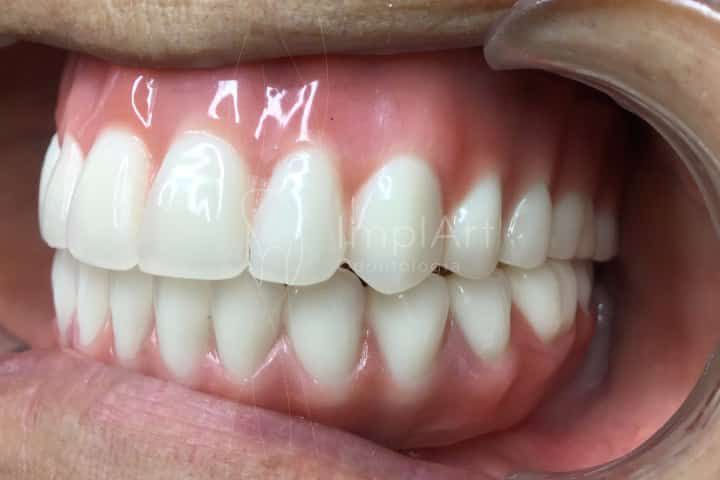
 Agende sua consulta agora por WhatsApp
Agende sua consulta agora por WhatsApp

